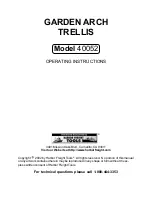
Maintenance manual
KONGSBERG PROPRIETARY.
This document and its accompanying elements contain KONGSBERG
information which is proprietary and confidential. Any disclosure, copying, distribution or use is prohibited if not
otherwise explicitly agreed with KONGSBERG in writing. Any authorized reproduction, in whole or in part, must
include this legend. ©2020 KONGSBERG - All rights reserved.
P a g e
31 |
7.15
Check for proper earth connection
For testing on units with power supply switched on:
Use a voltage meter to verify the voltage between a component’s earth potential (El-Motor, Frequency
Converter or Motor controller) and the ship hull, true earth. Reading above 0V might indicates abnormal
component voltage potential, presence of induced current in cable screen/earth wire or multiple earth
failures and risk of electrical shock is present. It is mandatory to implement measure to reduce risk of
electrical shock. Ships electrician or authorized personnel to be called to investigate.
With verified potential free component to true earth a visual verification of component protective earth
connection can be done.
For testing on units without power supply:
Use an ohmmeter to check the resistance between a component’s earth potential and the ship’s hull,
true earth (neutral ground).
7.16
Check for system temperature
While examining the hydraulic system it is recommended to measure the system temperature by an
infrared thermometer. Examine and make sure that there is no sudden change in temperature of the
pump, valve block, steering gear housing or expansion tank. Systems have alarm sensors that monitor
the temperature as an alternative.
The usual system temperature will change from system to system according to ambient temperature
and the condition it operates under.
The maximum permitted ambient temperature according to the class standard is 45 °C. Maximum
recommended short time peak temperature on the system is 70°C - 80 °C.
If the systems are cold (below 10°C - 20 °C) it is recommended to increase the ambient temperature. If it
is not possible to increase the ambient temperature, replace the hydraulic oil to one viscosity grade
lower.











































